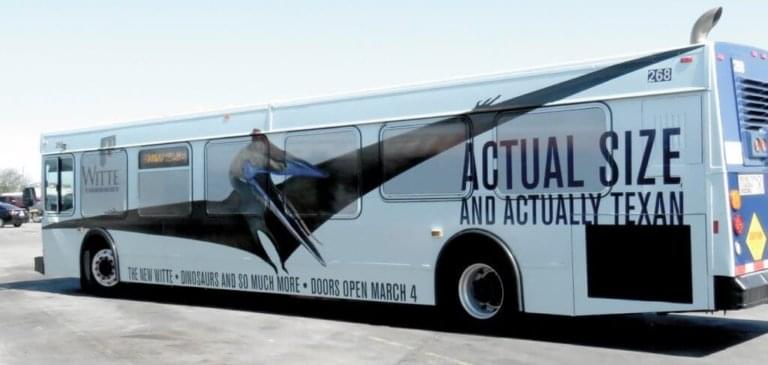
The transportation industry is subject to rapid change over the next few years. Technological wonders such as autonomous vehicles and Elon Musk’s Hyperloop have drawn much attention with their futuristic capabilities. However, there are looming advancements in transit advertising that will become much more common and accessible in the industry – advancements that today’s businesses need to capitalize on as soon as possible.
For business-owners, this means that 2019 is the time to evaluate their current marketing strategies and to assess the allocation and effectiveness of their transit advertising expenses over the coming few years.
But where do they begin?
This article outlines the state of transportation services and their advertising potential today, how the transportation industry is evolving, and what businesses should except to see and use in the marketing industry in the near future.
What is transit advertising?
Transit advertising refers to any advertising placed on, in, or around modes of transportation. This form of advertising can most commonly be found on or around buses, subways, trains, taxis, or moving trucks.
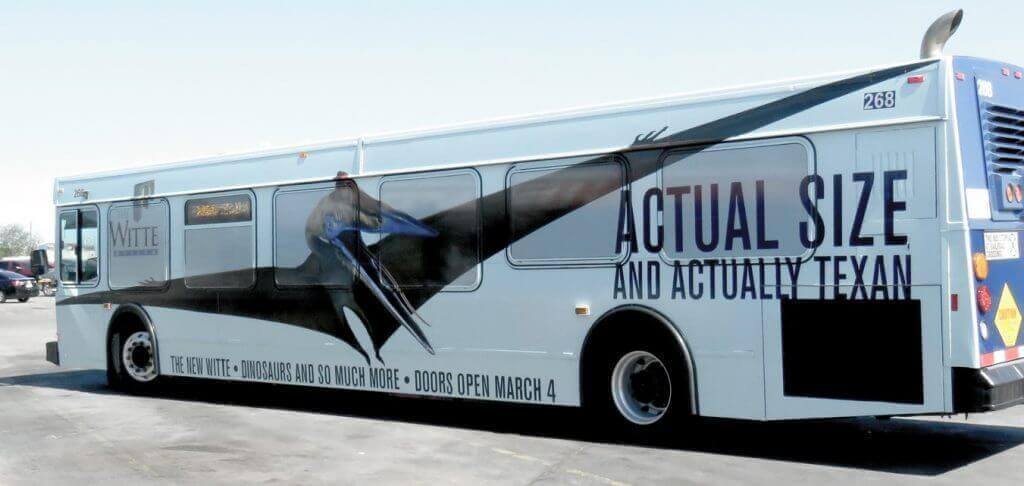
Transit advertising is an effective way of conveying brand and image to riders, and has the capability to reach audiences of all ages, backgrounds and incomes. Businesses are attracted to transit advertising because of its diversity in that it has an actual physical presence: it can’t be deleted, swiped, skipped, or turned off.
The state of transit advertising today
Transit advertising and all other forms of out-of-home advertising are under rapid growth. OOH advertising is seeing a substantial increase in demand across all industries as companies expand their OOH spending.
According to an Out of Home Advertising Association of America (OAAA) report, spending on out-of-home advertising grew 4.5% in 2018 to reach a total of $8 billion. Per the most recent report from OAAA, OOH advertising revenue rose by 6% in the first quarter of 2019.
Despite out-of-home advertising being one of the oldest forms of advertising, it is seeing new-age performance with its expansion to digital-out-of-home advertising, and is receiving the greatest attention from some of the top companies in the game: Apple, McDonald’s, Netflix, Google, and Amazon were all leaders in OOH spending in 2018.
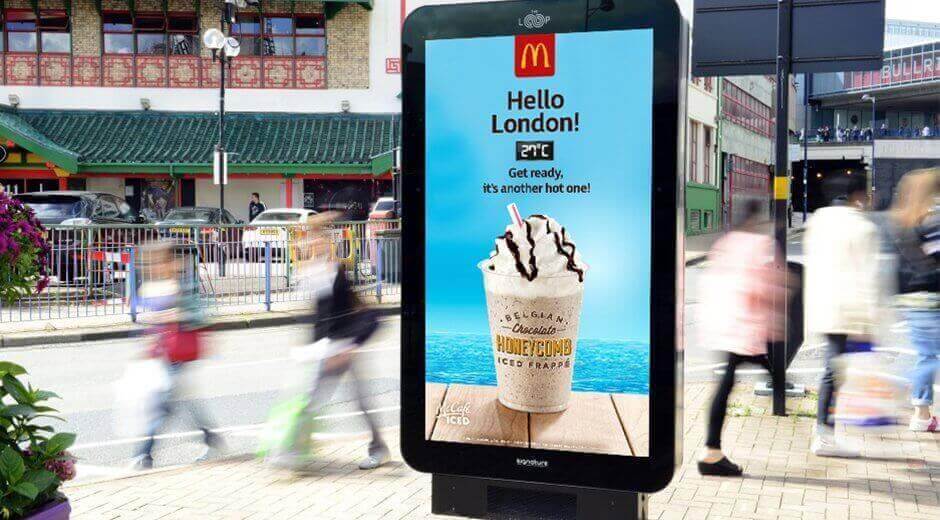
In some aspects, OOH advertising has even overtaken digital advertisements, such as those sponsored by Google and Facebook. Consumers are concerned with privacy, and as a result, have been turning away from online spaces, denoting them as less trustworthy. The digital pitfall has encouraged consumers to favour out-of-home physical advertisements: in 2017, Marketing Sherpa published a survey which stated that consumers rated outdoor advertising as more trustworthy than digital formats.
Is transit advertising sustainable?
The emerging digitalization and the new innovations in public transport are no longer threats to the transportation industry. Instead, the sector has absorbed and embraced the changes, pushing the potential of transit advertisement to the next level.
The statistics say that people are using public transit more than ever, and that the trend will continue over the coming years. The growing urbanism, environmental awareness, and the increasing popularity of programs such as Park-and-Ride has led commuters to ditch their cars and opt to take the cost effective public option instead. This ensures the longevity of public transit, and plays all to the benefit of transit advertising.
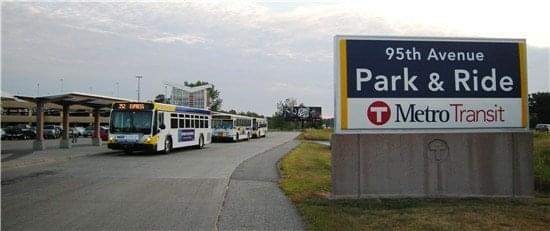
The continued development of cities and the resultant growing urban population will lead to a greater use of public transport. The World Health Organisation estimates that by 2030 the urban population will account for 60% of the total global population.
Not only are people using public transit more, but they’re staying on longer. Based on research conducted in 2016, the average person spends 44.8 minutes commuting through public transit.That’s 45 minutes of advertisement face time with consumers – an exposure time that gives transit advertisement a massive advantage over online advertisement. In Montreal, the average person spends 87 minutes commuting to and from their place of work, while in Toronto, that number jumps to 96 minutes, per Moovit Insights. As urbanization continues, this length will continue to rise and the effectiveness of transit advertising will increase.
Tomorrows transit advertising
Transit advertising is developing as a digitized medium, meaning new formats and innovations are on the way.
Not only can you reach a diverse set of customers on the inside of the bus due to the variety of demographics that Park-and-Ride brings to public transit, but you can also reach a large variety of people by advertising on the more traditional exterior signs. Available in various shapes and sizes, exterior posters and billboards display advertising messages to thousands of people in cars as well as pedestrians.
Buses travel through cities and outlying suburban areas, shopping malls, universities, business districts, amusement centres, supermarkets, theatres and convention sites. Local customers as well as visitors to the area will be exposed to the large moving messages. Digital billboards which have thrown out-of-home advertising back into fashion are now being sold with more technological advancements.
Digital billboards
Programmatic digital billboards are allowing for the easiest transactions between advertisement-sellers and digital billboard sellers than ever. Now, with programmatic automation, media buyers can access a digital billboard network’s inventory and book the screens they want, whenever available, whenever they want – no need for extended communication with network owners. Using digital billboard is now faster and easier than ever before.
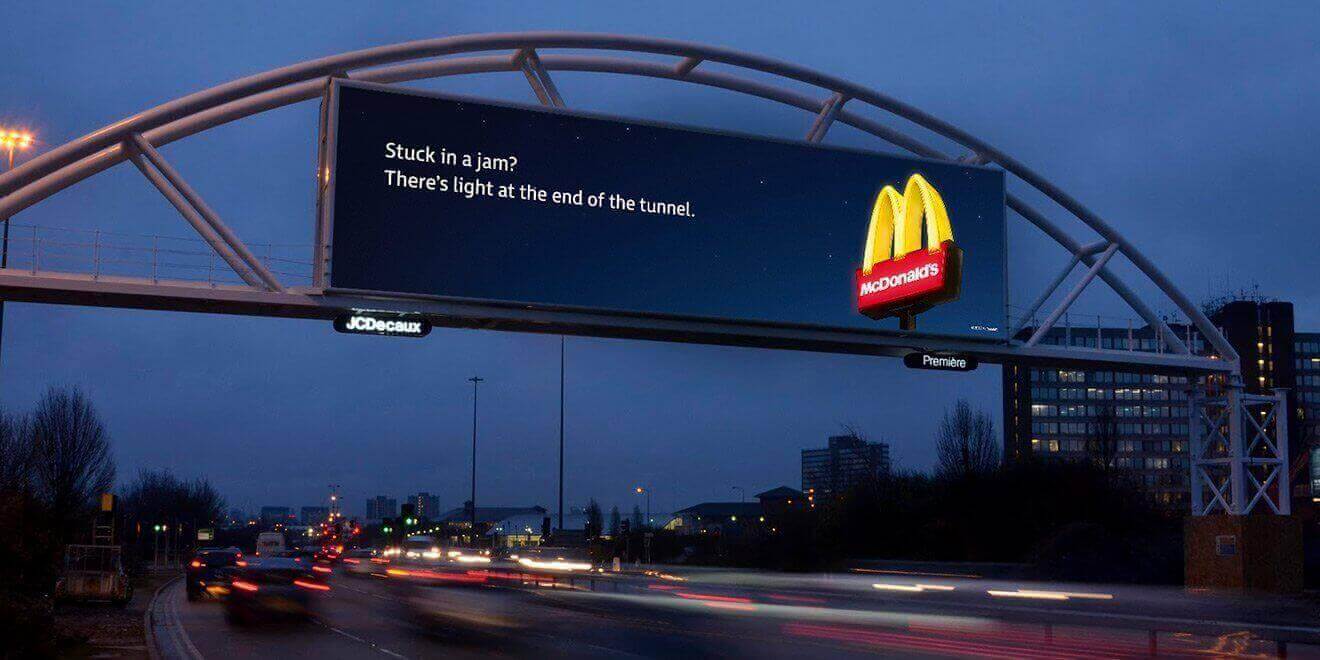
Not only are digital billboards getting more efficient, but they’re getting more intuitive. With real-time analysis, billboards have the ability to rotate between advertisements based on their surroundings at a specific moment in time in order to optimize their effect.
If traffic is progressing at a higher pace, then the billboard can analyze its surroundings and use it’s programmed advertisements which contain fewer words; if traffic is at a stand-still, then readers can take in around 150 words and the billboard will recognize the situation and run the ads with a higher word count.The addition of dynamic content such as the latest pricing, real-time product listings, and even live video is starting to become more and more common in digital OOH advertisements.
To add to the increasing impact of digital billboards, the trend is going mobile. Some buses are now incorporating digital advertising on the exteriors of their vehicles, adding another dimension to transit advertisement. These ads are highly effective in reaching pedestrians and drivers in other vehicles in that the digitization provides advertisements with optimal geo-targeting ability and LED screens that are visible at night.
Mobile Device Retargeting
With the use of mobile devices, OOH is reaching new heights with mobile retargeting.
OOH is using location as a staple of effective mobile and transit advertising. Now, through the use of external data feeds, companies can customize the time and the content of their ads in order to adjust to particular events nearby or to the amount of traffic.
Likewise, triggers for dynamic content can be based off of a companies’ own data instead; for example, matching your levels of inventory to the products you are offering, or through changing deals and promotions.
Businesses can now customize their marketing strategies with the help of socio-demographic data (gender, age, employment status), spatio-temporal data (mobile tracking, GPS navigation), and third party data.
Audio advertisement
In a totally new direction, companies are now incorporating audio into their campaigns.
Buses, equipped with federally-mandated technology which can identify upcoming stops and trigger announcements accordingly, can now trigger location specific commercials which last around 10 seconds.
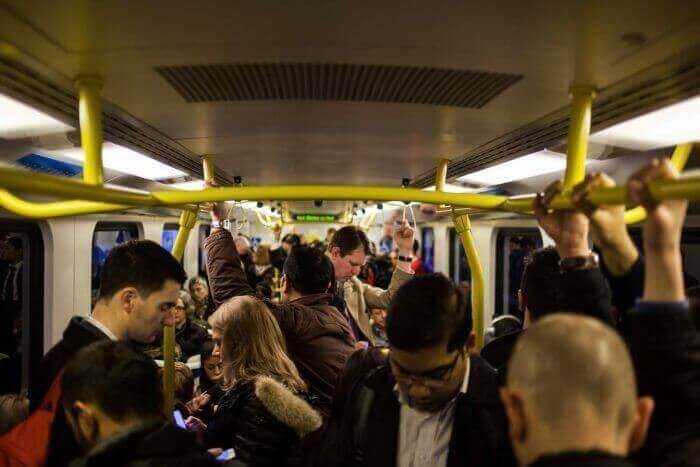
Commuter Advertising, a Dayton, Ohio-based company, is the first company in the world to capitalize on the audio advertisement industry and has been partnered with public transportation in 14 major cities since its conception in 2008. The service operates by tapping into the GPS system which already notifies passengers of upcoming stops, allowing the business to use advertisements which target specific routes and destinations. The function can even be optimized by being triggered to run advertisements only at stops known to be busy or full of riders of a specific demographic.
MediaVillage has stated that it expects a rise in the total expenditure on the audio marketing industry in the US; a total that they expect to exceed $20 billion by the year 2020.
Voice-Enabled Advertising and Connected Cars
The next trend in interactive advertisement, voice-enabled advertising has been dubbed the audio version of Google AdWords.
The innovation allows the listener to say a verbal command in order to take action on the content sponsored in the advertisement. This new technology allows businesses to take advantage of the growing voice-command and smart assistant industry, effectively increasing the efficiency and ease with which they can reach customers.

Now, in 2019, the audio marketing strategy is starting to become a staple for advertisement strategies everywhere. Spotify is launching a test project on the new format, announcing the launch of voice-enabled advertising in May 2019.
With the increasing popularity of smart speakers, wearable technology, and connected vehicles, even more opportunities for transit advertisement through audio are being created. Vehicles are no longer solely technology for getting to your destination – they are new mediums for engagement and active information which offer new and exciting opportunities for consumer interaction.
Connected vehicles, especially, provide more opportunity for businesses to reach potential consumers during their commutes. Drivers are more likely to be interested in longer-form content such as podcasts and the reading of specific online articles, as opposed to the shorter-form advertising that can appear in in-home devices.
It’s likely that voice-enabled advertising will make its way to connected vehicles sooner rather than later. Recently, Google partnered with Nissan, Mitsubishi, and other automotive dealers in order to incorporate Google into their vehicle dashboards. Additionally, Amazon announced their launch of Echo Auto, a piece of dashboard technology that can bring Alexa along with you on your car ride.
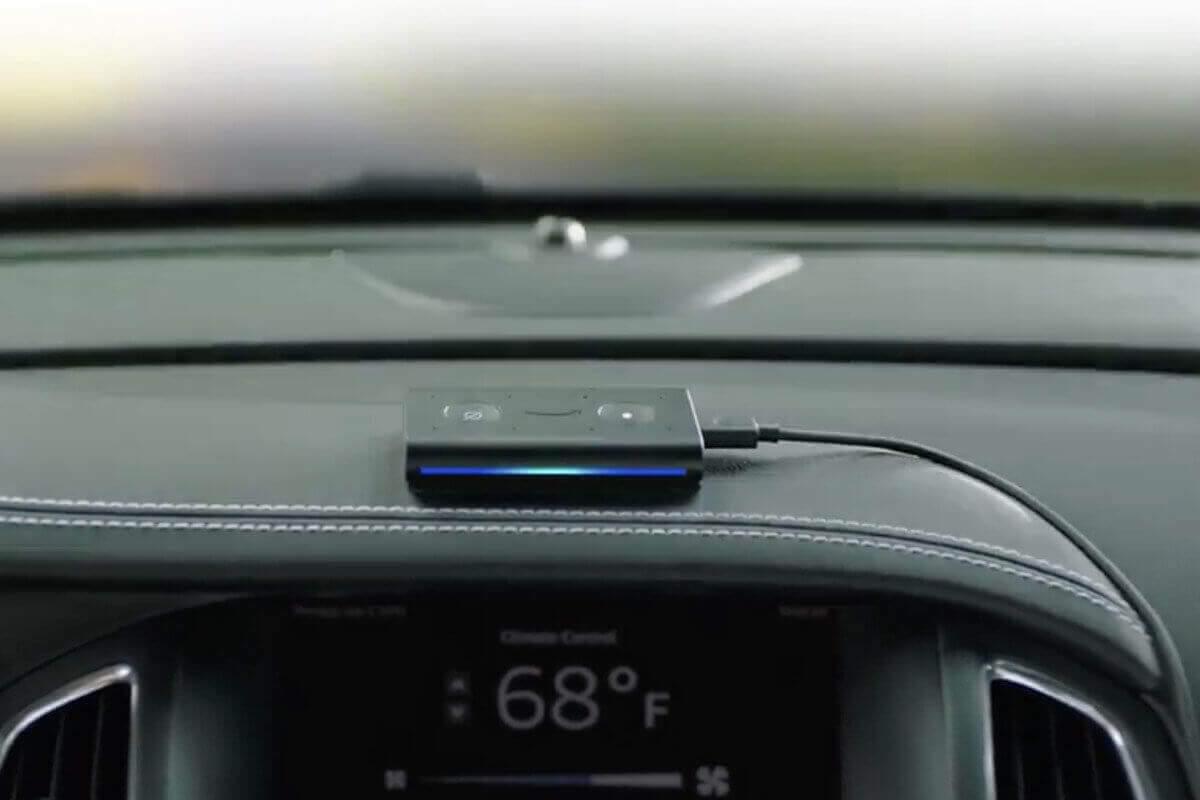
Of the many features connected cars introduce to the automotive industry is the incredible amount of data that the cars can collect. McKinsey predicts that the automobile data industry will be valued anywhere between $450-750 billion by the year 2030.
But where is all this data coming from? What data is being collected?
Connected cars have the ability to track a driver’s location at any time, can recognize frequented locations, travel routines based on the day of the week, and the music you listen to. They even have external cameras that can record all of your surroundings.
With their external cameras, connected cars have the ability to detect the advertisements you have already been engaged with, and can therefore offer new, unique content for maximum potential engagement.
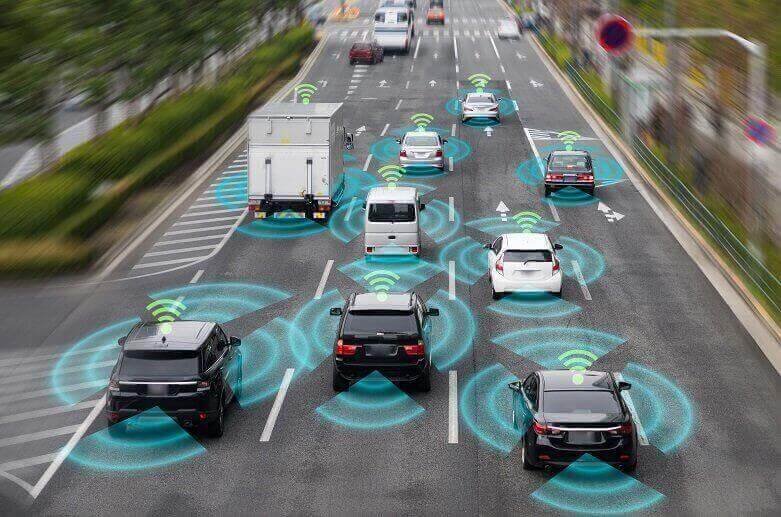
When it comes to transit advertising, vitality and consumer impression remain the name of the game. All signs point to transit and OOH advertising becoming the front-runners for tomorrows marketing campaign – they are more trusted among consumers, and are becoming more efficient with the continuous introduction of new technology. The time is now for businesses to gain a competitive advantage and invest their marketing budget into transit advertisement and it’s bright future.
Any business who fails to see the market curving towards transit advertisement has two choices: either invest in the trend ahead of time, or play catch-up and die trying.


